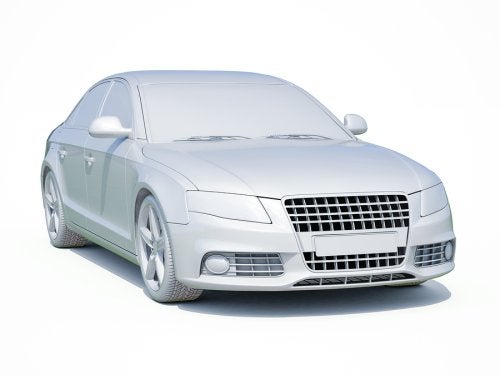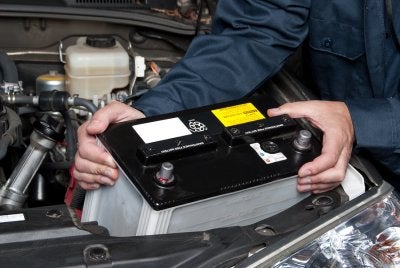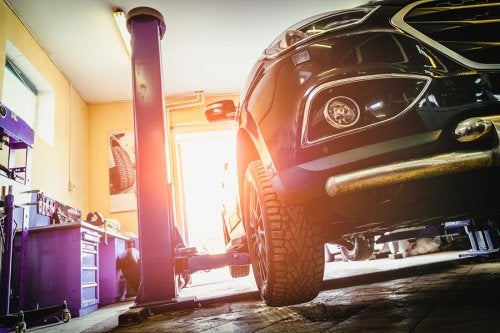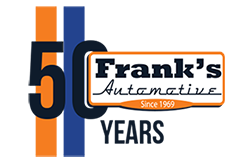-
Harmonic Balancer Separation 101
The harmonic balancer is one of the most crucial parts of your vehicle’s crankshaft. As your engine turns, the harmonic balancer absorbs its vibrations and provides you with a smoother and more enjoyable ride. If your harmonic balancer is damaged or broken, you will need to make an appointment for car repair in Sacramento. A German auto repair facility will have the tools needed to get your harmonic balancer up and running properly.
One of the most serious issues that can occur in a harmonic balancer is when the unit separates from the engine belts. When your harmonic balancer separates, it is in danger of falling out of the crankshaft. To prevent catastrophic damage to your engine, you will need to schedule an immediate appointment at your auto shop . Using special tools, your mechanic will be able to rejoin the harmonic balancer to the belts and restore your car’s crankshaft to proper function.

-
Common Causes of Battery Drain
Without a working battery, your car will refuse to start. Along with causing starting issues, low battery power can lead to troubles in the many electrical systems of your vehicle. An auto shop that offers Mercedes service in Sacramento can get to the bottom of your battery life problems. After you have received battery repair services from your local auto shop, you will want to be on the lookout for signs that your battery is being drained prematurely. Let’s review three of the most common causes of battery drain in today’s vehicles.

Illuminated Lights
Most drivers accidentally leave the lights on in their cars at one point or another. Even if your car is equipped with a system that turns off your headlights automatically, your interior lights or trunk lights can also be left on overnight. By leaving your lights on for several hours, you may wind up with a completely drained battery by the time you go to start up your car. To prevent your battery from dying, always remember to shut off all of your car’s lights before you head into your house for the night.
Electrical Problems
Certain electrical components, such as your radio and alarm systems, need to be supplied with a small amount of electricity at all times. However, if any of these systems are experiencing electrical problems, they may start to drain your battery excessively. A certified mechanic can troubleshoot your vehicle’s electrical systems and determine whether they are creating a parasitic drain on your battery.
Alternator Issues
In order for your battery to recharge with power, it must be supplied with fresh charge from your car’s alternator. If your alternator is experiencing troubles, however, the diode may not be able to deliver enough current to recharge your battery. When you notice the signs and symptoms of alternator issues, such as flickering headlights, do not hesitate to schedule a diagnostic appointment with your mechanic. By repairing your alternator, you will be able to safeguard your battery against excessive drain.
-
How Your Mercedes-Benz Mechanic Will Change Your Headlight Bulb
Your Mercedes-Benz is equipped with sophisticated components that should always be replaced by a car repair professional. This video from Car and Driver Magazine will show you how your Mercedes service mechanic will change your car’s headlight bulb. After removing the housing, your mechanic will carefully insert the new headlight into place. An auto shop in Sacramento will have the special replacement parts that are needed for use in your luxury Mercedes-Benz vehicle.
If your headlight or taillight has recently gone out, now is the time to schedule car repair services. Your mechanic can quickly replace your broken bulb and restore your car to safe driving condition in no time.
-
Why is it Important to Keep Up with Tire Maintenance?
Tires are the only contact point we have with the road, as they are the key to propelling and stopping your car. We rely on that small patch of rubber that is at each of the four corners of the car, to keep us on the road. It is important that we make sure that they are the proper tires, inflated, in good condition, wearing properly, and not too old.
Proper Tire
Car manufacturers choose specific tires to be fitted on their cars. They take into consideration what the vehicle was built for, its maximum performance, and weight loads. After determining these factors, they choose a tire that best fits the car’s needs. It is important to have these same considerations when we replace our tires. Choosing the wrong tire can have severe consequences. In the 1990’s, there were many cases where the manufacturer made the wrong tire choice leading to people losing their lives. It is crucial to go to a tire professional to help pick the right tires for your vehicle.
Proper Tire Inflation
Tire inflation is important for three reasons, handling, comfort, and fuel efficiency. Automotive manufactures have recommended tire inflation posted for your vehicle. The recommendations are based on the optimal pressure for two reasons. The higher the tire pressure, there is less rolling resistance, higher fuel efficiency, a rougher ride, and less traction. On the other hand, the lower the pressure, the better the traction, smoother ride, but there is poor fuel economy, and poor wear. They believe there should be a balance of good fuel economy, smooth ride, and ideal handling. Manufacturers usually put a sticker with pressures near VIN. label at B pillar or on the fuel door. There is a choice for a fully loaded or partially loaded car. Choose the inflation that best suits your needs.
Good Condition and Tracking Properly
To keep up with your tire’s wear, look for four things. Look for how deep is the thread, your vehicle’s alignment, tire balance, and damage.
Thread is what the tire manufactures use to move water from under your tire. Without it a tire would hydroplane and slide all over the road. Minimum thread depth on a standard road car is 3/32 of an inch. That is the minimum depth you want to see anywhere on the tire. One part of the tire may show considerably more, but it could be down to the steel belts elsewhere. It is important when checking a tire, you check the full width of the tire. The easiest way to measure the full width is to use a penny. Take a penny place it on edge with Lincoln’s head pointing in towards the tire. If the top of President Lincoln’s head is visible, then your tire is worn. All four tires should be examined and make sure to sample the complete circumference of the tire. Uneven tread wear is usually a sign of an alignment problem. Alignment is how we keep your vehicle tracking straight. If a tire is worn more on the inside or outside edge, it could mean your alignment is out of adjustment. Sports cars tend to have aggressive alignments and excessive wear in one part of the tire is to be expected. Sports car manufactures use alignment to allow their cars to handle better at higher speeds and side loads. The compromise of this is premature tire wear, usually on the inside edge. You may see a near perfect outer thread pattern and a severely worn inner one. Therefore, it is important to always check the full width of the tires.
If a tire is not properly balanced, the result will be a vibration that can be felt through the car or steering. Usually it’s a 5 mph range that you feel the vibration (e.g. 65 mph to 70 mph). This is commonly mistaken as an alignment problem. If not properly addressed, this can lead to scalloping of the tread and noisy tires.
Make it a semi-regular practice to check your tires for damage. Damage can come in the form of punctures (nails, screws, glass, rocks, etc.), sidewall damage from curbs, or bubbles. Bubbles occur when your tire begins to delaminate. Your tires are constructed of numerous plies of rubber and steel wire. Delamination is usually caused by an impact such potholes, running over bumps, or objects in the road, that causes the belts of the tire to tear, or age (which we will discuss in greater detail in the next section). At that point, the belts are compromised and can no longer hold its shape. An air pocket will form between belts and rubber tread, which may also be felt as a vibration.
Tire Age: How Old is too Old?
Two frequently asked questions, are how can you tell how old a tire is and what’s wrong with an old tire. Tires have “Born On Dates” which are production dates. They usually appear in an oval on the sidewall and consist of 4 numbers such as 1508. The first pair of numbers is the week in which the tire was made and the second pair is the year. For the number 1508 stands for the 15th week of 2008 or April 7-13, 2008. When buying new tires, it is a good idea to find out what is the production date of the tires you are buying, so you have a record of when your tires were produced. Tire manufactures and vehicle manufactures opinions vary on how old is too old. Six to eight years is a good timeframe to consider replacing your tires, despite how much tread is left on them. Contributing factors of tires aging are heat and humidity. As they age, tires will begin to break down and delaminate. Inspect your tires to see if you can see cracks in the sidewall, check the born on date, and most importantly, have a tire professional inspect your tires, and follow their recommendations.
Importance of Tire Maintenance.
Tire maintenance is important on many levels, as it is the only contact the vehicle has with the road. Efficiency and proper inflation can increase your fuel mileage. It is economically efficient to make sure your tires are properly inflated, balanced, and suspension aligned can extend the life of your tire. Most importantly if there is ever a question about your tires, ask a qualified tire expert to help you make the proper decisions. So much is riding on four little rubber contact patches and you should make the right choices.
-
What You Should Do After an Accident
While an automotive collision may cause visible damage to your car body, it can also cause problems under the hood. After you experience an accident while driving your car, do not hesitate to visit Frank’s Automotive for engine repair near Sacramento. Even if you are not aware of engine issues after an accident, your car may be suffering from serious and lingering issues that will cause further problems in the future.
When you bring your car to Frank’s Automotive for engine repair, we will start your appointment with a comprehensive diagnostic service. If your check engine light is illuminated, we can use our equipment to obtain your computer’s trouble code. Using our certified parts and tools, our team of mechanics will be able to repair any engine damage that was caused by your collision. We will make sure that you drive out of our repair shop with total confidence in the performance and safety of your vehicle.

RECENT POSTS
categories
- Uncategorized
- Automotive
- automotive diagnostics services
- Frank’s Automotive
- auto shop
- oil change
- Auto mechanic
- Maintenance
- maintenance schedule
- Catalytic Converter
- Engine Light
- oxygen sensor
- Transmission Problems
- BMW
- Pre-Purchase
- Brakes
- Anti-Lock Brakes
- Auto Diagnostics
- Alternator Repair
- Slipping Transmission
- Engine Trouble
- Brake Sounds
- Frank’s Automotive
- Frank Lettini
Archives
2022
2020
2019
2017
2016
- December (4)
- November (5)
- October (4)
- September (4)
- August (4)
- July (4)
- June (4)
- May (4)
- April (4)
- March (4)
- February (4)
